furore in manila: rome jorge, krip yuson, piping dilat, chari lucero, joi barrios and jimmy abad on the philippine national artist awards
Rome Jorge
More than 50 nominees are vying for the National Artist Awards for 2006. The period for nominations ended January 31 this year. The joint secretariat of the Cultural Center of the Philippines (CCP) and the National Commission for Culture and the Arts (NCCA) has collated all the data provided by the nominating institutions. The validation phase started in May and is slated to end July.
Process
Under the law, the National Artist Awards is conferred every three years to honor Filipinos with outstanding contribution to arts and letters. The award comes with lifetime medical benefits, allowances and state honors. Budgetary and logistical constraints permit no more than five to seven awardees for each National Artist Awards year. The joint secretariat of the CCP and the NCCA oversee the selection process.
Nominations phase: Only legitimate and registered organizations furnishing board resolutions nominating their candidate are accepted. The nominating organizations carry the burden of providing information on the nominee. Currently these include audiovisual digital data. The participation of nominating organizations in the process ends here. The names of accepted nominees are not made public to avoid lobbying. The joint secretariat collates all the data provided by nominating organizations and turns them over to the researchers.
Special research group: The researchers are respected experts in the fields, peers of the nominees, who must encode, validate and reproduce the data that will be the basis for decisions in next stages in the selection process. In the validation phase, no candidate is stricken from the roster unless found to be a foreign citizen or convicted for a grievous crime.
Artists short-listed from the last National Artist Award are automatically included in the current nominees. Researchers and peers related to the nominees or holding office in the nominating organizations are not included. Researchers cannot be part of the First or Second Council of Peers, the next two succeeding steps in the nomination process.
First Council of Peers: Both Council of Peers are selected by raffle. As with researchers, any conflicts of interest are avoided. For the First Council, five peers are assigned to each art category. Currently, the categories are: dance, music, theater, visual arts, literature, film, architecture, broadcast arts and recently, historical literature. The peers chosen to adjudge nominees are interdisciplinary. National Artists automatically are members of the First Council of Peers. A quorum is necessary for any decision.
Second Council of Peers: These peers number three for each art category. For the Second Council, peers are assigned only to the art form for which they are noted. As the plenary council, their decision determines the short list of nominees to be given to the President for approval.
Presidential prerogative: The head of state has the final say on who becomes National Artist. In its history, there have never been any subtractions by the any president to the final list, only additions. Though a President’s popular mandate comes with no aesthetic qualification, NCCA Executive Director Cecilia Alvarez explains: “that is her right as Head of State. She signs it.” It will be Alvarez’s first time to conduct a National Artist Award. The executive director enjoys a prodigious record of pioneering work in theater, international recognition as well as a role in antidictatorship efforts.
Criteria
Living artists who have been Filipino citizens for the last 10 years and those who died after 1972 who were citizens at the time of their death.
Artists who fostered nationhood with their art.
Pioneers in creative expression and style who influenced succeeding artists.
Artists with a substantial body of work and who continue to contribute artwork.
Artists who have garnered local and international recognition, prestigious awards, critical acclaim and respect from peers.
The Gawad ng Manlilikha, a parallel award, honors indigenous artists and boasts equal importance and benefits. Indigenous arts are often community-based with religious and practical applications; often they are not arts for arts sake, do not easily fall under Western categories, are poorly documented and escape popular recognition. Instead they are adjudged by a criteria determined by their own sociocultural context.
“The National Artist Awards encourages continued output from artists,” Alvarez explains. She also notes that age can be a factor in the selection process. “We prefer not to give posthumous awards,” she confesses. “The awards need to give timely acknowledgement.”
Ideally, ideology and partisanship should play no part in the selection process. However, National Artist Nick Joaquin, a vehement critic of Marcos dictatorship, accepted his award from the regime only so as to win the freedom of incarcerated fellow writer Pete Lacaba.
History
Proclamation 1001 dated April 27, 1972, created the awards. The first award was conferred to the classicist painter Fernando Amorsolo posthumously. Many of the modernists Amorsolo vigorously opposed in life, the likes of Victorio Edades and Vicente Manansala, are also National Artists in the Visual Arts category. Levi Celerio was nominated three times before finally being accepted in 1997. All the benefits due national artists are being given, save those for the late Ishmael Bernal, whose beneficiaries have yet to be determined by a court of law. With the inclusion of Carlos Quirino in the roster of National Artists, a new category of Historical Literature was created and which he now shares with no other.
Though there are those who criticize the process, Alvarez observes: “In situations like these there are always those who will damn it.” Some of the criticisms expose elitist prejudices against popular art. Other criticisms are rooted in partisan politics, misgivings about presidential prerogative and selection procedures. But the law lays out the process.
KRIPOTKIN By Alfred A. Yuson
The Philippine STAR 03/20/2006
Three years ago, a day after initial deliberations were conducted for the National Artist awards eventually given out in June of 2003, UP's university professor emeritus, the distinguished poet-critic-mentor Dr. Gémino H. Abad, wrote a letter to the NCCA's then executive director Mafin Yonzon and CCP president Nes Jardin.
Dr. Abad offered his observations on the conduct of the deliberation, lamenting that not much time was given the Committee on Peers, headed by him, to review the comparative merits of the nominees for Literature.
The letter was dated March 6, 2003, a day after the first-level
deliberations:
"It was only on March 4 that I knew who the nominees were – Virgilio Almario, Cirilo F. Bautista, Jose Asia Bragado, Juan Hidalgo, Magdalena Gonzaga Jalandoni, and Alejandro Roces; and on the day itself, during the course of our deliberations, another 'sector' (the Multi-disciplinary) was authorized to pass to our Literature 'sector' two other names, Bienvenido Lumbera and Bienvenido M. Noriega, Jr.
"The actual deliberations started about 10 a.m., so that we were to consider eight nominees within about two to two-and-a-half hours. Our anguish then was for lack of time, for so serious an Award, for so great an honor, as the title of National Artist on the sole ground of a nominee's inimitable achievement in art as a rich and distinctive contribution to our national cultural heritage. Ironically, for lesser honors (though without doubt they are also very significant) – the Magsaysay Award, the Palanca, even the Free Press – so much more time for the judges is expended."
He suggested giving the NCCA's research group better lead time to accomplish their task, especially with regards regional writers, and perhaps allowing the Council of Peers at least three months to conduct their review and deliberation.
Of course, Dr. Abad commented, he was all too aware of the so-called "budgetary constraints" – which to this writer must constitute the most tricky element in the choice of National Artists every two or three years.
Particularly telling, too, as part of Dr. Abad's post-mortem – and which I will hark back to in my own observations about the way this delicate matter is handled – is the following:
"… The documents provided us on each nominee are very helpful indeed, but they are not sufficient for the very day itself: we need to have thought out the matter long enough, consulting with other scholars, reading or re-reading the works of the nominees, reconsidering views and opinions, etc., way before the meeting where a decision has to be made.
"Speaking only for myself – if I had known beforehand, and were given sufficient time – I believe I could have made a much stronger case for Cirilo F. Bautista than the write-up prepared for him in our collection of documents. I must have been chosen, I suppose, as an 'expert' on Filipino poetry in English.
"I believe of course that Virgilio Almario deserves the highest honor of National Artist; but I also feel that, in his own place in our literature in English – which is not comparable with the course of our literature in Tagalog – Cirilo Bautista cannot be justly displaced."
Now here's my rhetoric and my beef, born of credible rumors to the effect that several weeks ago a differently composed Council of Peers had met to deliberate over the new set of nominees, and chosen a couple of names for Literature that would then advance to the second level of deliberations (which in turn had a regrettable end result). Well, to begin with, as for that new set of nominees, it seemed more like "same-same."
As reported by the usual birdies, the front-runners were Cirilo Bautista and Bienvenido Lumbera. National Artist for Literature Edith L. Tiempo, who joined that council deliberation, made a strong case for Bautista. It was also pointed out by some members of that seven-to-eight-man group that Bautista was the compleat creative writer. Epic poetry, short fiction in English, a novel and a book of poems in Filipino, and continuing works of criticism and journalism – these are Cirilo's domain. For his part, Lumbera's more significant work was in the field of literary scholarship and criticism.
The Council of Peers agreed to select these two names from the nominees' list to advance to the second round, the deliberations in which would be conducted by committee officers of the NCCA. Bautista would be representative of the Literature nominees for creative writing, while Lumbera would advance on the strength of his literary criticism.
Now guess who was knocked off in that second round of deliberations, and whose name as finalist will now be presented – and "lawyered" for – in the third and final round of deliberations conducted by the CCP board members as well as a few NCCA reps?
Cirilo Bautista is a long-time friend of mine, and Jimmy Abad's. It is however NOT this terribly Pinoy factor that causes us much anguish over the choice of Bien Lumbera as the Literature finalist. I have much respect for Bien, and with little doubt he qualifies as a prospective National Artist for Literature. Candidly, however, I must say that I find his criticism unfairly biased for Filipino and regional writers; he has practically dismissed the works of writers in English. I suppose that's because he likes to be seen as, or is in effect seen as, a "nationalist."
By the by, not a few writers in English in UP and beyond have asked jocosely of one another, over bottles of beer: "Name me one particularly memorable work of literature Lumbera has penned." These same beer house rhetoricians also predict that it is the "extreme Left" that will be overjoyed by their champion's ascension as National Artist. The communist candidate, it has been said rather bitchily.
Now I do not wish this to be construed as an attack on Bien Lumbera. Even as I could only smile over his backers' well-organized efforts at lobbying endorsement in the months leading up to NA deliberations, inclusive of testimonials from California Fil-Am groups and comprehensive Internet postings, I believe Bien has indeed done significant work for Filipino literature. Er, make that Philippine literature.
The least I could have bargained for, if someone cared to listen during those two rounds of deliberations, was that both Bautista and Lumbera were advanced as finalists for the ultimate reckoning. And, why, both could also be declared National Artists in Literature on the same year.
But I suppose that's where "budgetary constraints" come into the picture – that same variable that would have a committee deciding on the inclusion of departed nominees because the cash involved in the case of posthumous awardees is significantly less.
If it were to be an absolute one-person choice however between Bautista and Lumbera, I say give the creative writer the better due, as the scholar, researcher and critic is necessarily a second-tier citizen in the republic of arts and letters.
It may be too late, however, to repair the damage done the literary persona of the eminent creative writer Cirilo Bautista, one charge against whom, I hear from my usual intelligence sources, during the NCCA second-level review was that his "reclusivity was a mark of selfishness."
My eye! My word!
It does not matter that Bautista prefers to cocoon himself in his room at home to work on his outstanding poetry and prose, rather than waste his time socializing at book launchings, or that he only occasionally indulges in a little beer with close writer-friends. He has been selfless in mentoring generations of students at De La Salle and UST and at writers' workshops. His literary editorship of and column in Philippine Panorama magazine has for long years contributed to the molding of young poets and writers. He is the compleat writer, not merely (sorry, everyone) an epiphyte of a critic.
But that's how the ball bounces, especially when humans can only be human, subject to possible manipulation. I suppose that since my stalwart friend Virgilio Almario was anointed National Artist for Literature in 2003 (on the strength of his poetry in Filipino AND criticism, and conceivably not because scholar-critic Resil Mojares plugged for his scholarship on Filipino literature), a trend has been established, with Bien Lumbera's succession, that may keep our creative writers in English at bay where the National Artist for Literature is concerned.
I am sure that "Mom" Edith Tiempo, herself a notable critic, but whose poetry and fiction will be more of her inspiring legacy, will be saddened by this turn of events. And I can't help but imagine how Franz Arcellana, NVM Gonzalez and Nick Joaquin – our previous National Artists in Literature, all of them supremely creative writers in English – may be pshaw-pshawing in their graves.
Maybe we can start calling it the Nationalist Artist awards. That should be just as good a novel term as what's been bandied about as the "DNA" or Dagdag National Artist. I hear this year Soc Rodrigo might posthumously lay claim to that sorry title. Alas and alack. A pity, for Soc was a poet.
****
Recently, disinformation concerning the results of the deliberations has been coming out in sms, email and even newspaper columns. At the very least, this disinformation has been causing needless confusion, speculation and dismay. In the interest of transparency and accountability yet without breaking the complete confidentiality of the process, this letter hopes to inform the whole community of Filipino artists and cultural workers about HOW the National Artists are actually chosen, WHO are making the choices, and more importantly, WHO are the artists to be finally recommended to the President of the Republic of the Philippines "for confirmation, proclamation and conferral."
FIRST DELIBERATION
The first deliberation was held in January this year. Around 100 artists and cultural workers (now called Council of Experts, not Council of Peers as in 2003) met to decide on the first shortlist from more than a hundred or so names nominated to or listed by (not nominated but included after diligent review) the National Artists Awards Secretariat.
Some 100 nominees were presented: 5 in Dance, 14 in Music, 8 in Theater, 16 in Film, 4 in Broadcast Arts, 26 in Visual Arts, 19 in Literature, 5 in Architecture and Allied Arts, and 4 in Fashion Design.
*DANCE*: Paz Cielo Belmonte, Eddie Elejar, Corazon Inigo, Ramon Obusan, Alice Reyes *MUSIC:* Fides Cuyugan Asencio, Alfredo Buenaventura, George Canseco, Ryan Cayabyab, Josefino Cenizal, Ernestina Crisologo, Octavio Cruz, Constancio de Guzman, Fr. Eduardo Hontiveros, S.J., Gilopez Kabayao, Sylvia La Torre, Basilio Manalo, Eliseo Pajaro, Ramon Santos *THEATER:* Zeneida Amador, Amelia Lapena Bonifacio, Rustica Carpio, Romarico Cruz, Katy dela Cruz, Anthony Juan, Antonio Mabesa, Naty Crame Rogers *FILM:* Nora Aunor, Manuel Conde, Rogelio dela Rosa, Mike de Leon, Dolphy (Rodolfo Quizon), Peque Gallaga, Eddie Garcia, Rita Gomez, Fernando Poe Jr., Lolita Rodriguez, Gloria Romero, Carmen Rosales, Leopoldo Salcedo, Vilma Santos, Vic Silayan, Charito Solis BROADCAST ARTS: Cecilia Lazaro, Nick Lizaso, Dely Magpayo, Francisco Trinidad *VISUAL ARTS*: Pacita Abad, Federico Aguilar Alcuaz, Glenn Bautista, Dick Baldovino, Rosario Bitanga, Santiago Bose, Ben Cabrera, Alfredo Carmelo, Eduardo Castrillo, Roberto Chabet, Francisco Coching, Araceli Limcaco Dans, Abdulmari Asia Imao, Raul Isidro, Diosdado Lorenzo, Eduardo Masferre, Mauro Malang Santos, Onib Olmedo, Ramon Orlina, Cenon Rivera, Manuel Rodriguez, Simplicia Nena Saguil, Ricardo Trofeo, Romeo Vitug, Jaime Zobel *LITERATURE:* Cirilo Bautista, Antonio Realce Berango, Linda Ty Casper, Clodualdo del Mundo Sr., Ophelia Alcantara Dimalanta, Gilda Cordero Fernando, Lazaro Francisco, Juan S.P. Hidalgo, Jr., Lucila Hosillos, Magdalena Jalandoni, Bienvenido Lumbera, Genoveva Edroza Matute, Buenaventura Medina, Jr., Carmen Nakpil, Francisco "Soc" Rodrigo, Rogelio Sicat, Kerima Polotan Tuvera, Azucena Grajo Uranza, Rene Villanueva *ARCHITECTURE AND ALLIED ARTS*: Francisco Manosa, Felipe Mendoza, Felino Palafox, Ildefonso P. Santos Jr., Jose Maria Zaragoza *FASHION DESIGN *: Ben Farrales, Jose "Pitoy" Moreno, Joe Salazar, Ramon Valera
The experts (more or less ten in each group) met in groups to choose their candidates for the first short list. Then, the whole body convened and each group's representative announced their choice/s or non-choice.
Known to the more than a hundred or so people in the deliberation, those in the first short list are:
RAMON OBUSAN
*Music*
GEORGE CANSECO, RYAN CAYABYAB, ELISEO PAJARO, RAMON SANTOS
*Theater*
NATY CRAME ROGERS
*Film*
MANUEL CONDE, MIKE DE LEON, FERNANDO POE, JR.
*Broadcast Arts*
None
*Visual Arts*
BEN CABRERA, MAURO MALANG SANTOS
*Literature*
CIRILO BAUTISTA, BIENVENIDO LUMBERA
*Architecture and Allied Arts*
FELIPE MENDOZA, ILDEFONSO SANTOS, JR
* Fashion Design*
RAMON VALERA
SECOND DELIBERATION
The second deliberation was held in February. A representative of each group delivered a prepared presentation for each of the names in the short list (called by some people as "lawyering"), after which, the representatives of the group voting individually, trimmed down the list further to 8.
Unlike the first panel, second panel voted inter-category; one in which a representative from dance, for example, voted for the names in other categories.
Who are these 8 in the second shortlist? That this letter is not prepared to disclose. A lot of names have been mentioned, as previously stated, in sms, e-mail, and even in the press. The motives are not clear. Sourgraping? Red-baiting? Who knows? Some say the purpose is to preempt whatever decision the joint NCCA-CCP board will make when it meets this month to make the final decision: is it going to be all 8? 5? 6? Or none at all?
But what this letter is prepared to list down are the not-so-confidential names of those who will be choosing the names to be recommended to the president as the 2006 National Artists of the Philippines.
PEOPLE WHO WILL MAKE THE FINAL RECOMMENDATION
*NATIONAL COMMISSION FOR CULTURE AND THE ARTS (NCCA) *
AMBETH OCAMPO, chair
*CULTURAL CENTER OF THE PHILIPPINES (CCP)*
EMILY ABRERA, chair
NESTON O. JARDIN, president BENJAMIN H. CERVANTES LORNA P. KAPUNAN JAIME C. LAYA MARTIN LOPEZ TERESITA O. LUZ RUPERTO S. NICDAO JR. ZENAIDA R. TANTOCO ISABEL CARO WILSON BALTAZAR N. ENDRIGA, ex officio BEL DERAYUNAN, corporate secretary
*LIVING NATIONAL ARTISTS*
LEONOR OROSA GOQUINCO, dance NAPOLEON ABUEVA, sculpture LUCRECIA KASILAG, music ARTURO LUZ, visual arts ANDREA VENERACION, music EDITH TIEMPO, literature DAISY HONTIVEROS AVELLANA, theater FRANCISCO SIONIL JOSE, literature VIRGILIO ALMARIO, literature SALVADOR BERNAL, theater design ALEJANDRO ROCES, literature EDDIE ROMEO, cinema
*PLEASE PASS TO FELLOW ARTISTS AND CULTURAL WORKERS!!!
****
Why Beer House Rhetoricians Should Not Be in the Council of Peers for the National Artist Award
Rosario Cruz Lucero
First, let me share with Mr. Yuson and his ilk the wise words of two eminent British columnists:
Martin Amis: “Enjoying being insulting is a youthful corruption of power. Admittedly there are some critics who enjoy being insulting well into middle age. I have often wondered why this spectacle seems so undignified.”
Paul Johnson: “The most important point: Never exploit your power as a columnist for personal ends.”
Alfred Yuson, in his column Kripotkin (March 20 issue) impugns the artistic achievements of Bienvenido Lumbera by harping over and over again on the limited scope of Lumbera’s writing. A “second-tier citizen” he calls Lumbera, because he simply presumes that Lumbera is nothing but scholar, researcher and critic.
This only points to Mr. Yuson’s own semi-illiteracy and skewed ignorance about the whole field of Philippine literature. How can anyone putting himself forth as a spokesperson for Philippine literature be entirely ignorant of Lumbera’s primary position in the canon of Philippine culture and literature as playwright and poet? Much more can be said for Dr. Lumbera’s artistic, intellectual and inspiring influence in the whole field of Philippine literature, in the multiplicity of its cultures and languages.
As Yuson’s article continues, he descends into senseless vituperation, until he finally reveals his predilection for such simplistic equations as ‘nationalist equals communist’. We will leave it to Yuson’s fellow rhetoricians to take him to task for dragging them down into the slime of his own Philippine jungle energy beer house. I can only hope that when Mr. Yuson was composing his column, he was drowning in his cups sans their company.
To resolve the matter, I am proposing that he read a paper on the subject, or if he likes, even that very same column itself, for a Conference on the Philippine Literary Canon, in which everyone else engages in a fair exchange of educated and sober opinion.
Sincerely,
Rosario C. Lucero
Departamento ng Filipino at Panitikan ng Pilipinas
Kolehiyo ng Arte at Literatura
****
So What's Wrong with being a Nationalist Artist?
Like all texts, there are many ways to read Alfred Yuson’s column Kripotkin published in the Philippine Star on 20 March 2006. Among them are:
1. He was merely sour-graping. He wanted Cirilo Bautista to get the National Artist award and Bautista got eliminated in the second round. I agree with Yuson. Bautista does deserve the award (I even think Gemino Abad deserves it as well!). However, to attack Lumbera because his candidate didn’t win is to be pikon. As we say, pikon talo! Yuson did Bautista a disservice.
2. Mr. Yuson fears that after Almario and Lumbera, “a trend has been established... that may keep our creative writers in English at bay where the National Artist for Literature is concerned.” I would like to remind Mr. Yuson that of the ten National Artists in Literature, only two (Amado V. Hernandez and Virgilio Almario) are writers in Filipino and only one is bilingual (Rolando Tinio). If anyone should be afraid of being marginalized, it should be the writers who write in the regional languages, not the writers in English.
3. Mr. Yuson is horrified that the National Artist Award could possibly go to a nationalist. I regret that at his age, Yuson still does not understand the meaning of the word “nationalism” nor the great tradition of nationalist writing espoused by both National Hero Jose Rizal and National Artist Amado V. Hernandez. One could even argue that the writings of Gonzalez, Joaquin, Tinio, and Almario are nationalist writings, because yes, even writers in English – surprise! surprise! – can be nationalists. If I were a mind-reader like Mr. Yuson, I could perhaps say that the writers he mentioned -- Franz Arcellana, Gonzalez, and Joaquin -- are turning in their graves not because they are “saddened by the turn of events” but because they will be the first to deny that their patriotism can be doubted. After all, they did spend their lives “ “promoting national cultural identity and the dignity of the Filipino people through the content and form of their works” -- one of the criteria for being named a national artist.
4. Mr. Yuson’s column should be read in the context of the political repression in the country. Five Representatives of Congress (Satur Ocampo, Liza Masa, Joel Virador, Teddy Casino and Paeng Mariano) are holed up at the Batasang Pambansa because they have arrest warrants; Representative Crispin Beltran, 73 years old, is in prison. Randy David, Risa Hontiveros, and Dinky Soliman have all been arrested for supposedly leading rallies. This past year, more than a hundred people have been summarily executed. Indeed, to be perceived to be “leftist,” is dangerous in the Philippines.
Mr. Yuson has irresponsibly called Dr. Lumbera “the communist candidate,” making him an open target for the likes of Maj. Gen. Jovito Palparan, who was decorated yesterday for his “anti-left executions.” I am therefore holding Mr. Yuson responsible for whatever may happen to Dr. Lumbera.
In one of the other dailies, the headlines read: “Attacks on leftists mount.” Perhaps the column was not really about Bautista. Perhaps it was not really about the “marginalized” writers in English. Perhaps Mr. Yuson was simply revealing who his patrons are.
Sincerely yours,
Joi Barrios, Ph.D.
Associate Professor and Associate Dean for Academic Affairs
College of Arts and Letters
University of the Philippines Diliman
I’ve been mentioned in Alfred A. Yuson’s column and in Joi Barrios’response to it. I wish to contribute a thought on the matter.
All Filipino writers in whatever language are nationalists, unless it can be proved beyond reasonable doubt that, following the definition of“nationalism” in the document on National Artist Awards, a writer does NOT “promote national cultural identity and the dignity of the Filipino peoplethrough the content and form of their works.” As Sir Walter Scott has sowell put it, “Breathes there the man with soul so dead, / Who never to himself hath said, / This is my own, my native land!” I believe that “nationalism” is what is meant by the word “National” in the title of theAwards.
Yet “nationalism,” as defined for the Awards, is hardly an artistic criterion. There are many nationalists who, not being writers or artists, cannot be given the Award. The key word is Artist. The Award then is to be conferred on the sole ground of a nominee’s inimitable achievement in Artas a rich and distinctive contribution to our national cultural heritage.
In that light, if by literature as Art we mean “literary works” or “works of imagination” (poetry, fiction, drama), I believe Cirilo F. Bautista fully deserves the National Artist Award in Literature. Since 1963 to the very present, he has wrought a considerable body of works in Literature, in English and in Tagalog-Filipino – epic and lyric poetry, the short story, the novel – all of exceptional worth and quality. I make no invidious comparisons. I only insist on Art and artistic merit.
Incidentally, I cannot see why, in a given year for the Awards, there may not be two or even three, National Artists in one or the other artistic field. On artistic merit alone is the decision based, not on budgetary allotment.
Gémino H. Abad
Well... Okay, let’s be a tad bit serious. A lot of hackles have beenraised, for which I’m sorry. No intention there to raise the rage level on this planet. But I should have known better than to provoke a bit of a firestorm over “nationalism.” So here’s clarifying some points, in response to those raised.
A pity that poet Joi Barrios’ intended letter-to-the-editor didn’t see print. Not sure she did send it, but it got first play on the Internet. Basically, Joi took umbrage over my apparently reckless endangerment of Bien Lumbera’s person, given the recent crackdown on perceived enemies of the state.
I’d like to make this clear. I didn’t label Bien a communist. Even if he were, which I don’t know, nothing wrong there. It’s legal to be a commie in this country. In any case, I’m not into that sort of vintage labeling. What I more than inferred, and decried, was the “nationalist” posturing (being careful now to employ quotation marks, as an indication of both eyebrows raised) of his fan base.
The passages in my column that quoted what I’ve heard in beerhouses and then some (about “communist candidate” and nothing really memorable in his works, something like that) were meant to add some flavor of reportage. Oh yeah? What kind of reportage is that when it doesn’t identify the speakers? Tsismis reportage, that’s what. Hearsay, first hand. No need to reveal the identities of those from whose lips I heard those views, to which I must confess a level of tacit agreement on my part.
But Joi may have been in her rights to raise the alarm. As for“red-baiting,” no, I assured her by SMS, I’m not into that either. Just as I don’t have “patrons” whose desires or policies I could’ve been carrying out. Why, I don’t even dislike communists. What I didn’t text Joi was that I found them rather funny at best.
The Left, with its wide gamut of ideological predilections, I respect as a whole, albeit not entire. I told Joi that I’m with her and “them” when it comes to mounting any civil struggle against the “pang-gigiit” against Reps. Beltran, Ocampo and company.
Okey naman kami ni Joi matapos ng mahabang diyalogo sa selfon. Sa wari ko.She said I better clarify all of that. I agreed. So here it is: I wasn’t red-baiting — which would be an even funnier proposition than any perceived goals of the intended prey. And I’m not a Commie-hater, since hardly any gander gets up to ever replace bemusement.
As for the reported comments on Bien’s candidacy for the National Artist award, to relate these to any Commie witchhunt was a stretch, I thought.Maybe I’m not given to paranoia where I sit or stand. But if it alarms friends and colleagues alike, then I regret having included those remarks.
What I found admirable in Joi’s heartfelt communication, in private, washer loyalty to her mentor Bien, whose influence she acknowledges with great appreciation. In gist, she said she couldn’t allow anyone to attack Bien and get away with it.
Again, I assured her I hadn’t been on attack mode. It was her rejoinder that was “banat,” I said, before adding facetious remarks like “buti nalang banat na’ng mukha ko” — to which she replied something about “Botox.”And that’s how our SMS dialectics ended.
Next came a diatribe from Gary Devilles of Ateneo something or other, in very angry Filipino. I can’t comment on his protest over what I wrote on the National Artist awards, as I sense from his language that he’s so used to denounce anything in high dudgeon. Aba’y palengkero daw ako, eh siya yung nag-gagalaiti at halos makita na’ng tumiklop ang mga litid sa leeg.
Rosario “Chari” Lucero’s letter, published in this space last week, I can appreciate for its relative elegance and elements of humor, irony, sarcasm and hyperbole. The valid points raised are marred somewhat by academically liberal — in more ways than one — leaps of deconstruction. I never equated “nationalist” with “communist.” That inference she made on her own. Neither have I ever put myself “forth as a spokesperson for Philippine literature.” Maybe for beerhouses, even as I favor whisky.
I agree that Dr. Lumbera enjoys a “primary position” in “Philippine culture and literature.” Never mind the academic “canon”to the left and right of us. Her proposal to thresh out matters of literary evaluation in a conference would be welcome had it not betrayed unfair terms of engagement, as well an assumption that a rep from the lushlife can’t partake of an educated exchange.
Jonathan Chua was most civil, for which I am thankful. He too raised valid points that can be properly addressed, most soberly indeed. He credits Dr.Lumbera with having co-pioneered the “Bagay” poetry movement together with the multi-genre genius Rolando Tinio. All I know, in my semi-illiteracy,is that some lines of Tinio’s “Valedictory sa Hillcrest” are still recited from memory by lushes like myself. I’m sorry, but I can’t recall a single poem title by Bien. True, he still qualifies as an artist, because he has written exemplary librettos, some early poetry, and voluminous critical work.
I don’t dismiss all that. Bien deserves to be a National Artist all right, but for his art and not for his perceived “nationalism.” (More on this later.) What I maintain is that if the choice should be between Cirilo Bautista’s and Bienvenido Lumbera’s totality of artistic merits, the former would undoubtedly be more formidable. Bien has been a scholar-critic more than a literary artist. But his lifework and influence have also been formidable, for which he also deserves the highest award imaginable. And yet, to my mind, not over Cirilo. The problem, as I saw it, is that ideological accommodation played a part in the choice.
I would’ve been very surprised if Paolo Manalo hadn’t joined the Internet critics. This fellow has long had it in for me, for reasons we both know but which would be irrelevant to mention here. I just wish that as literary editor of Philippines Free Press, Manalo makes a better effort at ensuring that contributors receive their fees, for it is a more fundamental responsibility than writing precipitate poetics.
Reuel Aguila was right. I made dabog. Naiintindihan ko rin kung saan siya nanggagaling. Nirerespeto ko ang kanyang kakayahan at mga akda, at ang bunga ng kanyang batikos ay isa na rin sa aking pinagsisisihan. Hindi ko naman gustong makipag-away sa mga Filipinista. Dapat nga tayong magtulungan.
As expected, the most sophisticated and enlightening take on the brouhaha has been Adrian Cristobal’s. He intelligently takes me to task, but seems to exonerate me even before he engages in subtle excoriation. Whee! And I can only agree with his closure:
“We should judge writers by their works alone, lest we consider Ezra Pound and Carlos Bulosan to be bad writers because one was a fascist and the other a communist.
“That risk belongs to the philistine. May their tribe decrease!”
Others have joined the fray in strange ways, like e-mail-baiting in private and then sharing the exchange in public, while masking themselves with pseudo-addy-nyms. Oh, well. Blithe as blithe goes, to each his perverse pleasure. Now, for more provocation, possibly, owing to the sensitivity that has only led to token politeness, and, well, tokenism.
But let’s get “nationalism” out of the way muna. The reason I place that term within quotation marks is that I find the manner in which it is commonly claimed credit for as unbearably proprietary. The trouble with “nationalists” is that they love to proclaim themselves as such, as if everyone else who doesn’t cannot be a nationalist.
It’s become a matter of seething too much, denouncing too much, bearing too much of a humongous chip on the shoulder for too long, while taking too much credit for being the only lovers of country.
I agree with Jimmy Abad. (I hope his letter to the editor appears somewhere on this page.) There’s no monopoly on nationalism, which is not gauged by the language one uses or where one lives. I love our country for all its faults, our faults, and our own brand of occasional idiocy. But Id o not have to proclaim myself a “nationalist” to the exclusion of most everyone else. And I’m tired of having to walk on eggshells due to PC awareness of sensitivity.
Ma. Luisa Igloria, recent winner of the highly prestigious Stephen Dunn Award for Poetry, is no less of a nationalist for writing in English, let alone for choosing to teach literature out there in Virginia, USA. By the way, she competes in a much larger, more challenging arena. And yet she does us all proud with her Filipino poetry in English. Heck, make that poetry, period.
When Eric Gamalinda gets a story accepted by Harper’s, it’s an honor for all Filipinos, whether they write in Filipino, English, or Spanish. Heck, whether they write at all.
I am not advocating that we all write in English. I try to write in Filipino, but am better trained in English, as was most of my generation that grew up in Manila. Let us strengthen Filipino, and all other languages in our regions. Let us not however equate writing in Filipino (or Tagalog), or favoring the writing of Filipino (or Tagalog), with stronger or more authentic nationalism.
The demographics alone are against that sort of reckoning. We still have more Cebuano speakers. Ilocano writers write in Ilocano, Ilonggos in Ilonggo or Hiligaynon, Bicolanos in Bicolano. Sure, there are exceptions: a few Ilocanos, Ilonggos and Bicolanos write or also write in Filipino. But more of the same can and do write in English.
Contrary to doomsayers for English literary use at the height of the bilingualism debate of the ’70s, greater numbers of Filipino poets and writers are writing in English, I believe so much more than the increasing numbers of writers in Filipino. That’s because Filipinos outside theTagalog region have not yet reached any proficiency in Filipino. Someday it’ll happen, when the electronic media — radio, TV and film — manage to eventually improve that proficiency.
For now, there are hardly any venues for literature in Filipino. Hardly anyone even engages in travel writing in Filipino, or creative non-fiction in Filipino. Which is not saying that it’s an inferior language. It’s just younger than major literary languages of the world.
When a Filipino writes in English, he necessarily takes on a tougher challenge — that of participation in the continuing evolution of a language that has been used for centuries, by the likes of Chaucer and Shakespeare and Oliver Wendell Holmes and Salman Rushdie and Michael Ondaatje.
When a Filipino writes in Filipino, yes, he is writing in the language of his blood, and yet — and this is no invidious comparison — he is upholding, enhancing and reinventing a much younger tradition that “only” goes back to Balagtas and Lazaro Francisco and Amado Hernandez andVirgilio Almario.
When Cirilo Bautista writes in English, he vies against the standards of excellence that continue to be set in that yet dynamic language. When Bienvenido Lumbera champions Filipino literature almost to the exclusion of the merits gained by Filipinos in literary English, I believe he does a bit of disservice to scholarship and criticism.
Three years ago, I formally argued for a National Artist award for Virgilio Almario because I believed in the total creative worth of his literature in Filipino. I even said it was high time another NA award went to a writer in Filipino, after Amado Hernandez. I would have argued the same for Dr. Lumbera, but not at the expense of Dr. Bautista.
Of course all this has been moot, even when I first wrote on the matter (which is why Reuel is right in saying na nagdabog lang si ako) — given the fact that Lumbera was already chosen as the sole finalist for Literature. Even as this is being written, he could well be on his way to gaining the award. I cannot begrudge him or any other writer or Lotto winner any prize.
On an aside, as I texted Jonathan, bigyan naman sana ko ng konsiderasyon na sa tanda kong ito, alam ko namang ang nakikitang pagbatikos ko kay Bien ay malamang na mag-garantiya na maging NA nga siya. Alam naman natin ang sikolohiyang bumabalot sa mga nagdedesisyon.
No claiming of any credit, however, in hindsight or with foresight. I just had to say what I believed in, maybe because I have the guts, or chutzpah, or moxie, or apog. Na magdabog.
But again, at the risk of offending sensibilities, even those of my ka-barkadang mga Filipinista, uulitin ko ang aking paniniwala na mas mahigpit pa rin ang hamon ng pagsusulat sa Ingles. Kayat ang dapat ay galingan pa ang pagsulat sa Filipino. Mas madaling mangyari ito kung ilalapag na lang muna ang bagahe ng ideolohiya.
Sa ganun ay dadami ang magsusulat ng mga kaakit-akit na kakaibang mgatula tulad ng mga gawa ni Freddie Salanga, Pete Lacaba, RayVi Sunico, Beni Santos at Allan Popa — na siyang mga aral din sa Ingles at nagamit ang kanilang natutunan dito. O mga akdang pang-awit tulad ng mga hinahangaan natin mula kina Heber Bartolome at Joey Ayala — at panibagong hinahangaan kong si Israfel Fagela ng sisikat na bandang Los Chupacabras.
To my calumnists, please understand that not everyone can have a regular newspaper column. Some of us are asked to fulfill the role. I try to popularize literature, mostly Philippine — more often those in English because there are more works in English. I am not a critic but a reviewer and a tsismoso. I also try to be light, which is why I dub someone like the young Angelo Suarez “the Kobe Bryant of Philippine Literature.” Sorry if I can’t similarly laud efforts to tack on to a topical-trendy term like “jologs” for perishable poetry.
I am so sorry to Bien and Shayne for the hurt I caused. Couldn’t help it; it couldn’t be helped.
Let me end with gravity and flippancy: two sides of the same coin of eloquence (ahem). “The language of nationalism is in the heart, while the art of literature is in the mastery of universal craft.” That is mine. “Thanks for the intellectual discussion. It’s always hard to defend a losing argument. But you did a decent job of it.” — From the Cleveland Cavaliers message boards, and which we’re all free to say to one another.
BAGUIO CITY -- President Gloria Macapagal-Arroyo has conferred the title National Artist to her political opponent, the late actor Fernando Poe Jr.
The President conferred the title last March 30 following the recommendation by the Joint Boards of the Commissioners of the National Commission for Culture and the Arts and the Trustees of the Cultural Center of the Philippines.
Poe was conferred the title national artist for film.
Poe died of a stroke in December 2004 with his electoral protest questioning the proclamation of Arroyo still pending before the Presidential Electoral Tribunal. The protest was later thrown out by the PET due to Poe’s demise.
Malacañang also announced the conferment of the title of national artist to Bienvenido Lumbera for literature, Ramon Obusan for dance, Benedicto Cabrera for visual arts, Ildefonso Santos for architecture and Ramon Valera (posthumous) for fashion design.
Conferment ceremonies are scheduled for June 9 in Malacañang.
Yes, that includes sincere kudos to Sir Bien, who certainly deserves the award. Albeit I still say, for the benefit of those who may have followed the teapot furor a couple of months ago when I first wrote about the 2006 National Artist Awards, that I’m not taking back much of what I said then.
Artists have to be congratulated without qualification, however, whenever they receive some accolade, as little else do they reap in these parlous times other than the personal satisfaction of fulfilling the creative urge.
I’ve said my piece, mostly with regards the deliberation process involving the Literature awardee. And I’m sticking to my view that the premier poet Cirilo F. Bautista should have ALSO gained the National Artist Award this year.
That’s only the first of my continuing "gripes" – if you want to call it that, besides "rant" and "sourgraping" kuno, the alleged predilection of columnists of my "ilk" – that is, if you engage in UP Diliman-speak. Honestly, I’d like to think of the following as valid observations and comments that may yet make it to the suggestion box for the improvement of the NAA selection process.
What are the questions that easily come to mind when one learns about this year’s awardees? What, none for Music?! Eighty-million-something musical, karaoke/videoke-crazy Filipinos, the soul bros of Asia, and not one deserves a National Artist Award this year?
Granted that Cecile Licad has an invalid passport, what about Ryan Cayabyab, whose versatility, effort, and quality and quantity of creative output have been unquestionable? Or Gilopez Kabayao, whose passion, commitment and individually-driven grassroots program have been legend for over a hundred years it seems? Why not him, not enough lobbyists? Or, say, Joey Ayala? Too young? Or Freddie Aguilar? Too long-haired, too prole, too much of a Hobbit House and folk bar performer, despite Anak, which was accepted as an anthem in Indonesia and Japan? Maybe he deserves the title of International Artist instead? What about the Bolipatas? Or, say, George Canseco and Willie Cruz, too commercial as songwriters? Shouldn’t a "classic" song like Sana’y Wala Nang Wakas instantly earn an NAA for its creator? What about the artistic composer Ramon Pagayon Santos? Or for a PoMo flavor, Joey "Pepe" Smith? Too late a comeback?
But isn’t it unbelievable that no NAA goes for Music when six others are given for fields that are less than sublime? Like Fashion Design? So what’s next, by 2010, an award for Hair Design? Bag Design? Furniture Design? Computer Software Design? Interior Décor?
And for Film Arts, is Fernando Poe Jr. really that qualified, as an artist? Wasn’t he, bless his soul, more of a one-dimensional actor, a dedicated producer, and a rather commercial director, albeit he did attain a craftsman’s high level? Or is it a politically-tinged (not tainted, ha?) consuelo de bobo token, posthumous pa man din? But is he deserving of an artist’s award for Film more than directors like Mike de Leon, Peque Gallaga, Kidlat Tahimik and Raymond Red, or consummate actors like Nora Aunor, Vilma Santos and Christopher de Leon?
Why is Malang always snubbed for Painting? Di ba pwedeng sabay with Bencab? Was it because he made fun of the Awards in the past by saying he’s quite content being a National Book Store Artist? Aren’t we so loaded with genius on the visual arts front that two or three of our painters and sculptors ought to be elevated to this national distinction every time the opportunity comes? So that soon we can also honor non-establishment artists like Danny Dalena and Chabet and Pandy Aviado? Or our first-rate sculptors like Ed Castrillo, Ramon Orlina and Impy Pilapil? Have they been too financially successful for their own good?
If the selection process served its purpose in an entirely proper manner, would we have, year after year, the still questionable fillip of having a "DNA" (Dagdag National Artist) proclaimed by solo presidential fiat? Or shouldn’t Abdulmari Imao have been considered seriously in the first place, and not just because he comes from Muslim Mindanao?
Why no award for Theater Arts either? Wasn’t Bibot Amador, bless her soul, perfectly qualified? Was it because she did too much of Broadway musicals? But wasn’t that theater, too? When Cecile Guidote Alvarez steps down as NCCA executive director, shouldn’t she be in the running herself, despite all those years in exile when she engaged in indie theater in New York, and did the Pinoy proud? Or should she have been here all that time?
Why the new category of Historical Literature? Shouldn’t that be part of Literature, plain and simple? Finally, must budgetary constraints even enter the picture at all?
Rhetorical rant na nga yata ito, excuse me. Okay, let’s try to be sober and academic about this. Granted, the previous NCCA leadership tandem of Dr. Jaime Laya as chair and Virgilio Almario (himself an NA now) as executive director helped lay the basis for a more competent nomination, deliberation and selection process than existed before. But undoubtedly, this process can still be improved.
Now that the awards are to be given at a regular three-year cycle, instead of two as earlier recommended, it gives the NCCA more time to undertake a thorough conduct of accepting and vetting nominations. And yet, there is something iffy about the nomination process itself. Lobby groups and/or determined artists can mount a campaign that easily translates into an often mis-perceived momentum. Helped along by agency insiders and cliques, faux momentum can build up and establish a nominee as a sure bet, even before the deliberations.
The NCCA may well look into the possibility of having its research committee actually complement the submitted nominations by including names of shy/modest artists after it has interviewed living National Artists and artists’ organizations in every field. This way – speaking only of Literature – the likes of Greg Brillantes, Gilda Cordero Fernando, Ophie Dimalanta and Jimmy Abad can get into the running. Otherwise, they’re consigned to the dustbin that collects the not-seeking-the-award types, who will merely inherit the earth.
The first-level deliberations among a six-or-seven-man group, formerly labeled as a Council of Peers, is fine, but the time given them for their important discussion must be expanded beyond a morning and afternoon session. If need be, give them a full working week, so that they can go over all the submitted nominations (from both the usual outside bodies as well as the NCCA’s research committee) and weigh comparative credentials carefully, before arriving at a respectable shortlist of as many as five or more valid contenders.
It is in the second level of deliberations and selection that we can really take issue with. Here, a select three-man committee from each art category (including Fashion Design for this year, I suppose), get together with the rest of the other counterpart committees in a plenary session. And hear out the "lawyer" for each field of semi-final nominee/s.
Now, not too many of us are Renaissance personalities who, as individuals of many admirable parts if not hats, are qualified to pass judgment on the nominees for all the traditional and non-trad genres (remember, one more by 2010, with the likely inclusion as nominee of Mr. Ricky Reyes, known as "First Artist" in the FVR/Ming dispensation).
Heck, I’ve been writing an Arts & Culture column for years, but I’d balk at having to decide on the qualifications of nominees for Architecture, or Dance, or, yes, Fashion Design.
The point is that this second level of discussion and selection should still be limited to the experts in each field. Membership in the NCCA committees does not a multi-faceted member-judge make. Very likely, what happens is that most of these selectors simply defer to the expertise of each committee.
Reports vary, however, regarding this stage in the process. Maybe the select three-man committee for each field does make the decision alone, and the rest of the plenary action is ministerial. In which case, what distinguishes the second Council of Peers from the First?
What could happen at this stage is for the representative leftovers from the first-level committee to have their shortlist vetted by, ideally, an academy (which admittedly is still problematic to organize). Other than this, the vetting at this stage can involve all possible artists’ groups, as an informal academy of this or that genre.
This need not take place in the NCCA premises. Legitimate groups or their reps can be sought out, as a general assembly might just result in jeeploads of warm bodies being ferried in, as was done in the past when, say, Literature sub-committee elections were held. Militancy has its merits, but it can also quickly turn into a tyranny of numbers. Needless to say, the actual credentials and influence of each org that comes into play must be factored during this level of discussion. In effect, this will be the final vetting, where the respective orgs can do their best in building up or destroying, er, deconstructing, individual repute.
There is also a bit of a problem with regards the third and final level of selection, which involves reps from the NCCA as well as the entire membership of the CCP Board. Alas, not a few of these NCCA reps and CCP Board members are your usual government appointees or elected officials, or worse, maybe their better halves or proxies. Meaning to say, they aren’t really all that qualified to participate in the final selection of outstanding artists from various fields.
At best, most are more familiar with the performing arts, understandably so because they get tickets to CCP Main Theater events. It has been my experience as a two-time "lawyer" for Literature nominees to wind up aghast at the notion that a good number of such judges hadn’t even read a single work of "Mom" Edith L. Tiempo, now a National Artist, or, for that matter, that of Rio Almario, but whom they knew as a former peer in a government arts and culture body.
This problem may not be resolved until the appointing power begins to desist from peopling arts and culture boards with not a few satraps or sinecurists. To obviate as well any arbitrary decision from a body limited in scope and qualifications, in passing earnest judgment on the respective worth of artists, this final selection ought to rely much on sage counsel from the living National Artists as well as other eminent culture experts.
In brief, then, the NCCA’s first-level council vets the research on nominees, and comes up with a shortlist of as many as five or more names that will then be vetted through consultations with legitimate functioning organizations involved in that particular art field, until an even shorter list comes up, say one, two or three, which will then be presented to the final selection group, which would also listen to the advice and commentary rendered by National Artists and members of the League of Extraordinary Gentlemen and Ladies, aka Eminent Persons.
Now, if all that sounds much like the proffered workings of a transition council or junta that might have taken over last February had a certain general not left his men in their camp, well, it gives you an idea of who else might have been in cahoots with destabilizers.
Seriously, for all the caviling and nitpicking, for now we should all be grateful that we have a National Artist Awards process at all. Better than nothing, yes. But the process can still stand its own vetting.









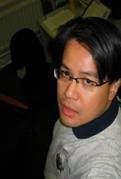





























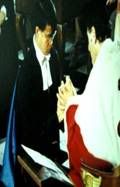





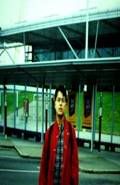



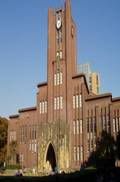


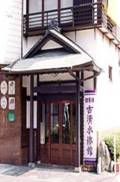
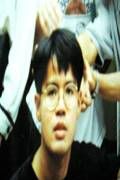
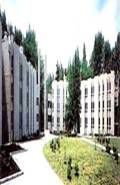



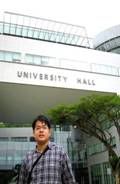






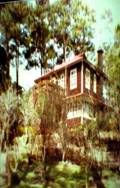
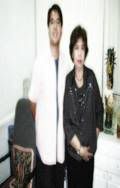





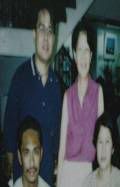
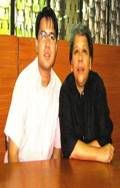
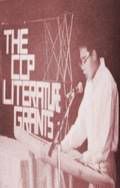
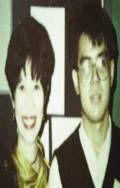


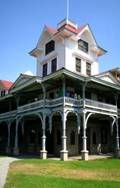

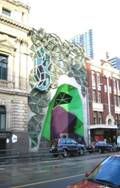











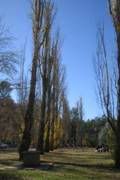





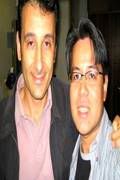
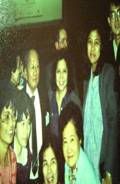

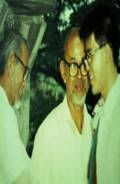
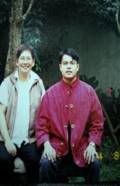

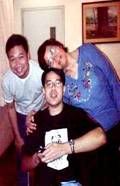
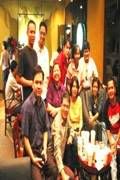


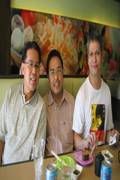

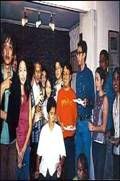
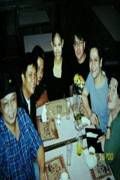

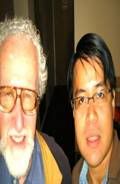
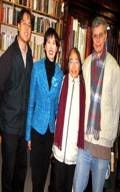

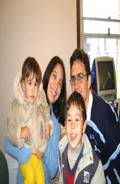

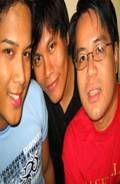

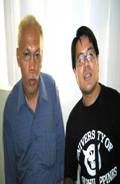
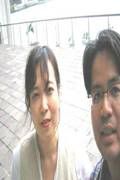

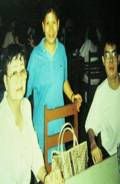

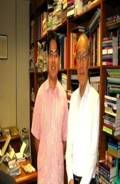
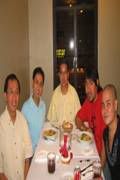
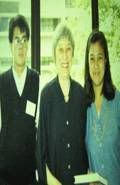

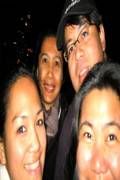
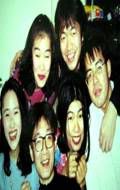


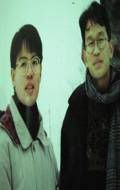
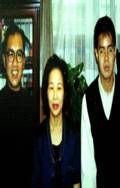



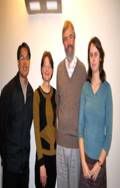
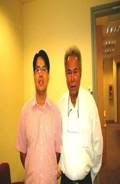

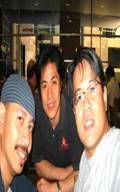
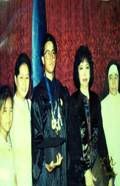
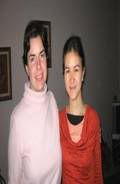

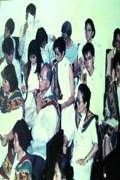
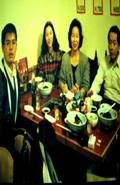
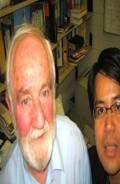


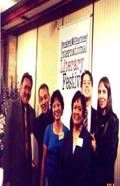


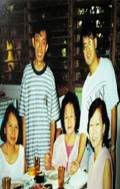

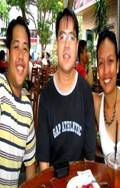

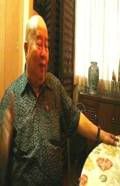



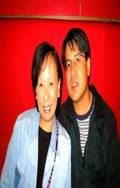


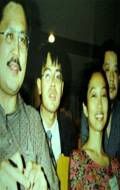
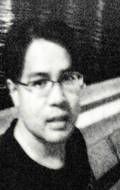
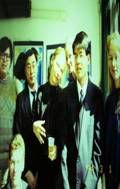
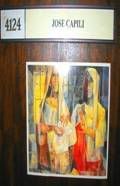



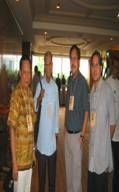
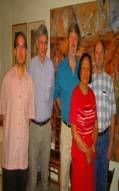
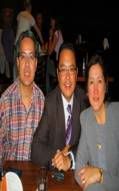

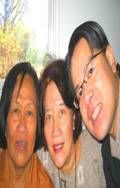
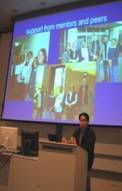
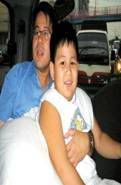
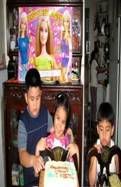
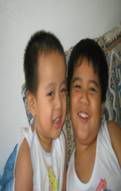

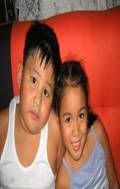


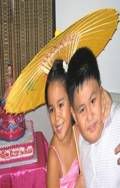
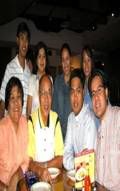
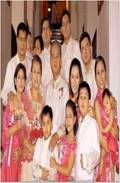







2 Comments:
Neat photo, there Wendell. :)
thanks pao. just found it in some archival baul. in time.
Post a Comment
<< Home